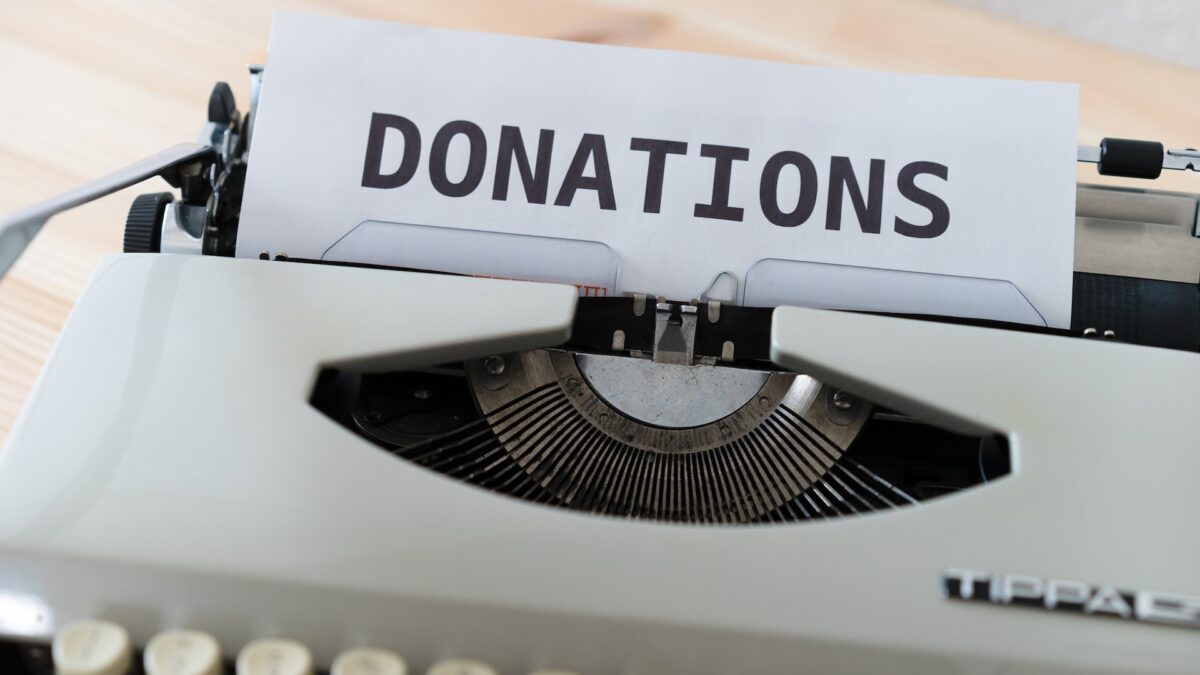
5 Estate Planning Considerations for LGBTQ Couples
December 14, 2022
Financial Goal Setting Tips for the New Year
January 3, 20235 Tax-Efficient Charitable Giving Strategies to Consider at Year-End

In this article, we’re sharing five tax-efficient charitable giving strategies that may help you reduce your 2022 tax bill.
If you’re charitably inclined, you know that giving back can be both personally fulfilling and impactful. It can also be financially beneficial for donors who approach their philanthropic goals strategically.
Specifically, donors who itemize on their 2022 tax return may deduct cash donations up to 60% of adjusted gross income (AGI) and non-cash donations up to 30% of AGI. If you exceed these limits, you can carry the additional amount over to the next tax year for up to five years.
Indeed, charitable donations can provide valuable tax benefits for savvy donors. Yet careful tax planning is essential. Fortunately, there are strategies that can help you reduce your year-end tax bill while also doing good for others.
As we near the end of another calendar year, consider adding the following tax-efficient charitable giving strategies to your to-do list:
#1: Donate Appreciated Non-Cash Assets
In the United States, cash makes up only 7% of total wealth, according to data from the St. Paul & Minnesota Foundation. Yet 85% of charitable contributions are cash donations.
Many charities also accept donations of securities like stocks, bonds, and mutual funds, as well as real estate and business interests. In many cases, donating these types of assets can benefit your charities of choice just as much as cash can. Plus, your tax benefit for donating non-cash assets may far exceed the potential benefit for donating cash instead.
When you sell an asset outside of a qualified account, you may be subject to the capital gains tax if your income exceeds a certain threshold. In 2022, the capital gains tax rate is 15% for most taxpayers and 20% for the highest earners. Thus, if you purchased an asset for $25,000 (your cost basis) and sell it for $50,000, you’re responsible for paying taxes on the $25,000 gain.
However, you can avoid the capital gains tax by donating the appreciated asset if you’ve owned it for at least a year. You can also deduct the fair market value of the donation on your tax return, up to 30% of your AGI, if you itemize. Meanwhile, the charity can convert the asset to cash tax-free.
Indeed, this win-win makes donating appreciated non-cash assets one of the most tax-efficient charitable giving strategies available. Yet donating non-cash assets can have other benefits, too.
For example, if you participate in an ESOP or have otherwise accumulated an outsized position in company stock, donating a portion of your shares can help you diversify your portfolio and potentially reduce risk. Alternatively, you may choose to donate appreciated securities and repurchase them at a lower price to maintain your allocation while reducing your potential tax liability.
#2: Bunch Your Charitable Contributions
To take full advantage of these tax-efficient charitable giving strategies, you must itemize deductions on your tax return. However, itemizing only makes sense if your deductions exceed the standard deduction. In 2022, the standard deduction is $12,950 for single filers and $25,900 for married taxpayers filing jointly.
If you need to boost your deductions so you can itemize this year, one option is to bunch your charitable donations. Bunching is a strategy that involves making two or more years’ worth of donations in one tax year so you can realize the full tax benefit. Then, you may choose to take the standard deduction in years when you don’t donate.
For example, say you plan to donate $5,000 to charity each year for the next several years. If you have extra cash on hand this year, you may want to consider donating $10,000 or more to your charity of choice so you can itemize your deductible expenses. Then, next year, you can skip your regular donation and take the standard deduction.
#3: Contribute to a Donor-Advised Fund (DAF)
Donor-advised funds (DAFs) are becoming an increasingly popular giving strategy. In 2021, charitable assets in DAFs totaled just over $234 billion—a 39.5% increase from the previous year—according to NP Trust.
When you contribute cash or non-cash assets to a DAF, you can take an immediate tax deduction in the year you make the donation. However, like other tax-efficient charitable giving strategies, you can only realize the full tax benefit if you itemize.
Thus, similar to bunching, a DAF allows you to front-load several years’ worth of donations and deduct the full amount on this year’s tax return, up to IRS limits. You can also donate non-cash assets like highly appreciated stock to a DAF and avoid paying the associated capital gains tax.
Yet unlike bunching or gifting non-cash assets directly to charity, contributing to a DAF means you don’t have to decide immediately which organizations receive your donation. Instead, your funds can grow tax-free within the DAF until you direct them to a specific charity.
#4: Realize Capital Losses and Donate Cash Proceeds
Years like 2022 can be difficult for investors to endure, especially when most asset classes decline in value. However, down markets can provide an opportunity to sell certain investments at a loss and lower your overall tax bill.
The IRS allows taxpayers to offset capital gains and up to $3,000 of ordinary income with realized capital losses. This strategy—often referred to as tax-loss harvesting—can meaningfully reduce your taxable burden at year-end if you’re also selling appreciated securities.
At the same time, realizing capital losses and donating the proceeds can be a tax-efficient charitable giving strategy. In addition to offsetting taxable capital gains or income, you can deduct the amount you donate, up to 60% of AGI, if you itemize.
Be sure to consult a financial professional prior to selling securities, however. Altering your asset allocation can introduce other potential risks to your portfolio that diminish the tax benefits of this strategy.
#5: Make a Qualified Charitable Distribution (QCD)
If you’re age 72 or older, the IRS requires you to take distributions from your traditional IRA each year. Required minimum distributions (RMDs) can increase your taxable income and potentially push you into a higher tax bracket.
However, if you don’t need the extra income this year, you can donate your RMD to charity via a qualified charitable distribution (QCD). A QCD allows IRA owners to transfer up to $100,000 directly to charity each year, thus reducing your taxable income.
At the same time, a QCD can help you reach the necessary threshold to itemize on your tax return. This may allow you to take advantage of additional tax-efficient charitable giving strategies that otherwise wouldn’t benefit you if you took the standard deduction.
It’s important to note that the IRS considers the first dollars out of an IRA to be your RMD until you meet your requirement. If you take advantage of this tax planning strategy, be sure to make the QCD before making any other withdrawals from your account.
An Experienced Financial Advisor Can Help You Identify Tax-Efficient Charitable Giving Strategies
Year-end provides an opportunity to reflect on the progress we’ve made over the last 12 months and set goals for the year ahead. If you’re charitably inclined, it may also be your last chance to achieve your philanthropic goals while taking advantage of the associated tax benefits.
An experienced financial advisor like SageMint Wealth can help you proactively identify tax-efficient charitable giving strategies throughout the year. We can also help you develop a long-term plan to meet your philanthropic goals and other financial objectives.
At SageMint Wealth, our goal is to alleviate stress, create stability, and provide the guidance you need to create the future you want for yourself, your family, and the world. To learn more about how we help our clients live well and do good, please contact us. We’d love to hear from you.
Content in this material is for general information only and not intended to provide specific advice or recommendations for any individual. This information is not intended to be a substitute for specific individualized tax advice. We suggest that you discuss your specific situation with a qualified tax advisor.
Related posts
Live Well. Do Good.











